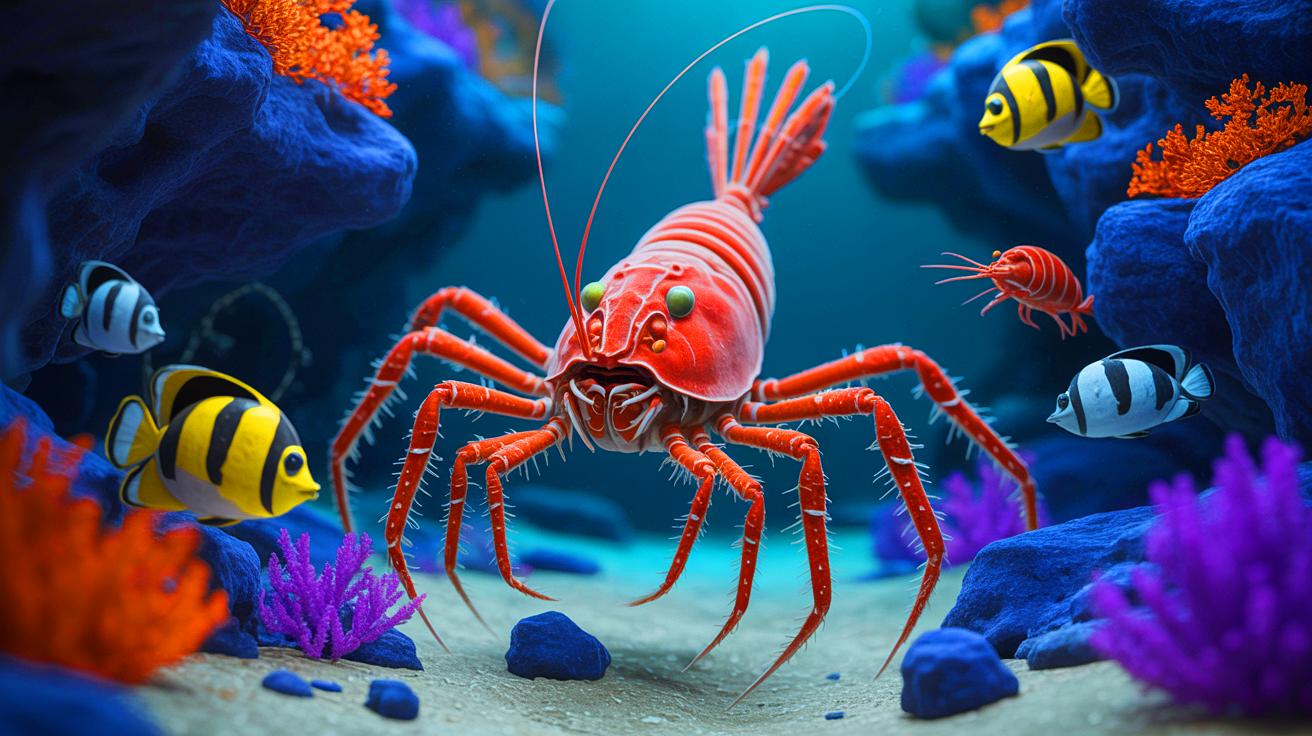- 🌊 Atacama Trench: A deep-sea canyon off South America’s coast, home to unique and rare fauna adapted to extreme conditions.
- 🦐 Discovery of Dulcibella camanchaca: A new species of predatory crustacean, showcasing unexpected ecological behavior in the abyss.
- 🔬 Abyssal Gigantism: The newly found crustacean exemplifies this phenomenon, achieving disproportionate size in resource-poor environments.
- 🚢 Advanced Expeditions: Sophisticated technology reveals the ocean’s hidden biodiversity, emphasizing the importance of ongoing exploration.
In the depths of the Pacific Ocean, beneath nearly 26,000 feet of water, a recent discovery is reshaping our understanding of extreme marine ecosystems. This discovery, a previously unknown crustacean, goes beyond zoological significance; it introduces a new predator into the abyssal food chain. The Atacama Trench, carved by tectonic forces off the coast of Chile, was thought to host only scavenging organisms adapted to scarce life. Yet, an unknown crustacean, morphologically designed for hunting, reveals an unsuspected predator capable of thriving in this harsh environment.
The Unique Ecosystem of the Atacama Trench
Off the west coast of South America, the Atacama Trench plunges nearly 26,000 feet deep. This underwater canyon, formed by the subduction of the Nazca and South American plates, harbors a rare fauna, uniquely adapted to some of the planet’s most hostile conditions. The trench is shrouded in darkness, with temperatures nearing freezing and immense pressure crushing down.
The Atacama Trench stands out among oceanic trenches for its isolation and rich sediments, which are nourished by nutrient-rich surface waters. Since the 1960s, numerous expeditions have explored this remote area, uncovering remarkable biodiversity adapted to extreme conditions. Holothurians, mollusks, and scavenging amphipods have been recorded, playing a crucial role in cleaning up ocean floor carcasses.
Until recently, all amphipods recorded at these depths were scavengers. No active predators had been observed, leaving the trench an ecosystem misunderstood. The discovery of Dulcibella camanchaca challenges this model, indicating a more complex ecological dynamic.
What This Abyssal Predator Reveals About Species Evolution
Described in the journal Systematics and Biodiversity, this crustacean, measuring under 1.5 inches, belongs to a new species and genus. Its name, Dulcibella camanchaca, evokes both the gentle beauty of medieval poetry and the dense fog of the Atacama Desert, symbolizing its dark habitat.
Unlike scavenging species, Dulcibella exhibits an anatomy tailored for hunting. Its streamlined body, flexible limbs, and mouth adapted for shredding suggest it preys on small bottom-dwelling species like Hirondellea amphipods. Although stomach examinations have yet to confirm this diet, its morphology suggests predatory behavior.
This discovery highlights that marine trenches harbor not just unique life forms but also unexpected ecological behaviors. This species is the first in its family to combine morphological and genetic traits distinct enough to warrant a new genus.
The predator also exemplifies a fascinating case of abyssal gigantism. At nearly 26,000 feet deep, it achieves a size disproportionate to its shallower relatives. Though not fully understood, this phenomenon might reflect an adaptation strategy to resource-poor environments.
Increasingly Sophisticated Expeditions to Explore Marine Life
In October 2023, a lander deployed from the vessel R/V Abate Molina captured Dulcibella camanchaca at 25,928 feet deep. Developed by the Instituto Milenio de Oceanografía, the device was equipped with bait traps, measuring instruments, and cameras. Ironically, the camera malfunctioned before reaching the seabed, depriving researchers of real-time footage.
Only after weeks of analysis did the team identify the specimen’s novelty through a cross-taxonomic approach combining morphological observation and DNA sequencing. This integration confirmed genetic kinship with other genera while highlighting differences sufficient to establish a distinct lineage.
This discovery underscores that oceanic trenches still harbor a largely underestimated reservoir of biodiversity. The emergence of an active predator at such depths reveals more complex trophic interactions than previously thought. It also reminds us that each hadal expedition can bring surprises, emphasizing the importance of exploration amid the global biodiversity crisis.
As the mysteries of the Atacama Trench continue to unfold, the recent discovery of Dulcibella camanchaca prompts a reevaluation of deep-sea ecosystems. With advanced technology and persistent exploration, the ocean’s hidden depths hold potential breakthroughs for understanding life’s adaptability. What other secrets might the abyss conceal, waiting to transform our insights into the natural world?
This article is based on verified sources and supported by editorial technologies.
Did you like it? 4.6/5 (28)
